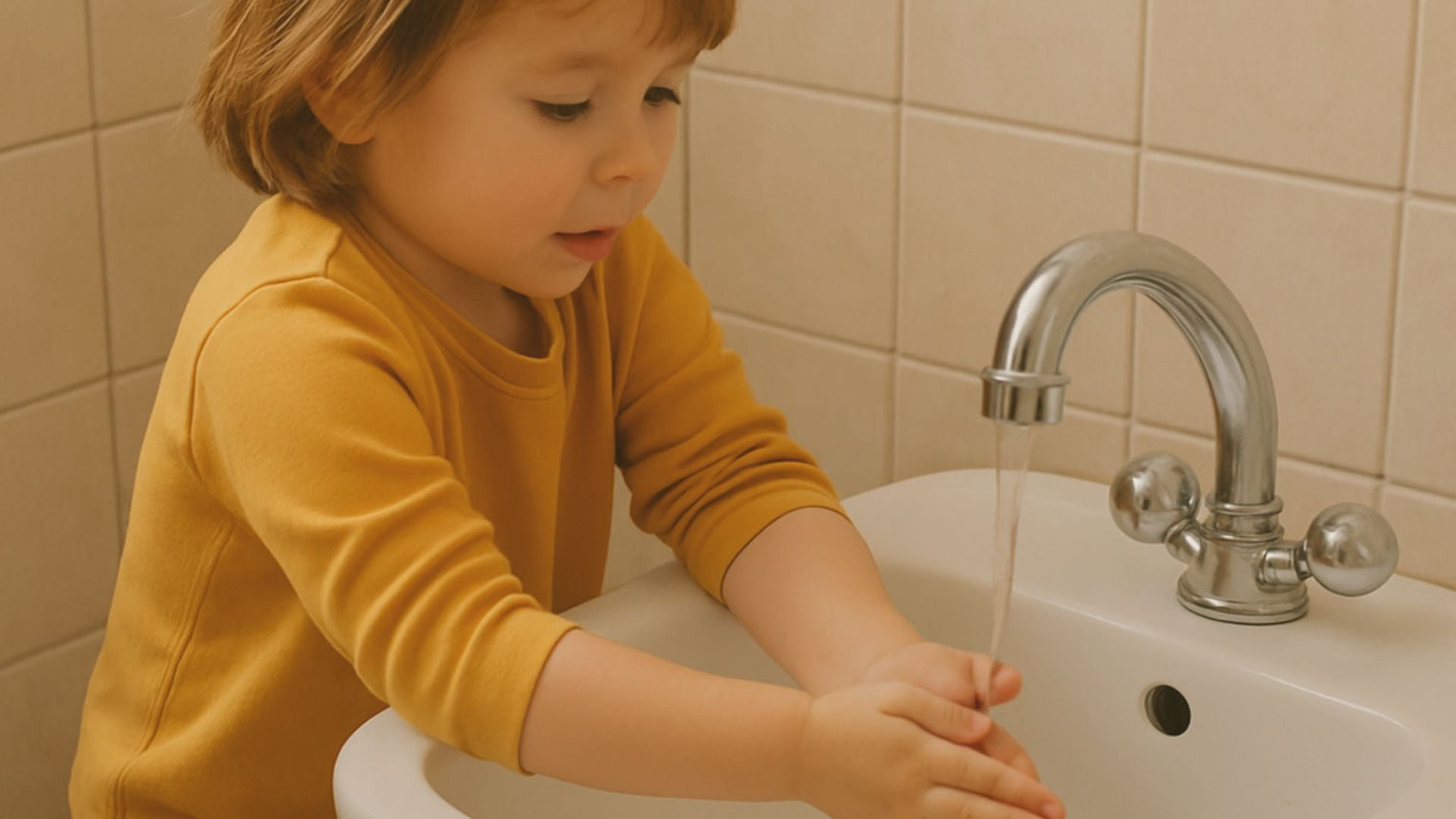Creating a home that supports your child’s independence is one of the most rewarding things you can do as a parent.
The Montessori philosophy encourages this by designing spaces that are functional, accessible, and tailored to a child’s size and abilities.
While most people think of Montessori bedrooms or playrooms, one of the most overlooked areas is the bathroom — yet it’s one of the most empowering spaces for children to learn self-care and responsibility.
At Dannico Woodworks, we believe that every corner of your home can be thoughtfully designed to nurture growth, confidence, and independence.
A Montessori-inspired bathroom is more than just a practical setup — it’s an environment that helps children take ownership of their routines, from brushing their teeth to washing their hands and learning to tidy up after themselves.
If you’re ready to create a child-friendly bathroom that blends safety, style, and function, this guide walks you through exactly how to do it — step by step.

Developed by Dr. Maria Montessori, this educational approach emphasizes child-led learning and independence.
In practical terms, it means creating environments where children can perform tasks on their own.
A Montessori bathroom caters to this by being accessible and safe for children, encouraging them to take charge of their personal care.
Key Elements of a Montessori Bathroom
Child-Sized Fixtures

While it's not always possible to install child-sized fixtures, you can make use of step stools to help them reach standard fixtures safely.
Accessible Storage
Children should have easy access to the items they need. Consider open shelving at a low height where they can reach towels, toothbrushes, and other necessities. Using baskets or bins can help keep these items organized and within reach.
Safety First
Safety is paramount in any child's environment. Ensure that all surfaces are non-slip and that sharp edges are covered or rounded. Cleaning supplies and medications should be stored high out of reach or in locked cabinets.
Encouraging Independence
The Montessori method encourages children to take responsibility for their space. This can be facilitated by providing them with cleaning tools like a small broom or a cloth to wipe spills. Teach them how to use these tools to clean up after themselves.
Practical Bathroom Design Tips
Choosing the Right Colors
When it comes to color, opt for soothing, neutral tones. Bright colors can be overstimulating, whereas softer shades create a calming atmosphere. Add a splash of color with accessories like towels or a bath mat.
Functional Accessories
Select accessories that are both functional and child-friendly. For instance, a soft, easy-to-hold toothbrush handle or a small, lightweight towel. These items should be easy for a child to manipulate on their own.
Incorporating Natural Elements
Consider adding natural elements to the bathroom. Plants can bring a touch of nature indoors, though they should be placed out of reach to avoid spills or ingestion. Alternatively, you can use nature-inspired decor to create a serene environment.
Mirror Placement
A mirror at child height is a great way for children to become familiar with their own reflection and practice personal grooming. Choose a shatterproof mirror for added safety.
DIY Projects for a Personalized Touch
Building a Step Stool
If you enjoy woodworking, consider building a sturdy step stool. This essential tool will help your child access sinks and counters independently. Ensure it has a wide base for stability and non-slip pads on the feet.
Customized Towel Rack
A low-hanging towel rack can encourage your child to hang up their towel after use. You can make a simple one from a piece of wood and some hooks, giving it a personal touch with paint or wood stain.
Personal Hygiene Station
Create a small hygiene station with a basket for toiletries. Label each item with pictures or words to help your child learn what each item is for and where it belongs.
Encouraging Routine and Responsibility
Establish a Routine
Routines are vital in helping children learn responsibility. Create a simple morning and evening routine chart with images and words that your child can follow. This visual guide can help them remember the steps in their hygiene routine.
Reward System
Implement a reward system to encourage your child as they learn to manage their personal hygiene. This could be as simple as a sticker chart that marks their progress and achievements.
FAQs
At what age can a child start using a Montessori-style bathroom?
Children as young as 18 months can begin using a Montessori setup with supervision. Start small — with a step stool and low towel rack — and expand as your child’s skills improve.
How can I make the bathroom space appealing for my child?
Use natural colors, soft lighting, and items your child can handle independently. Keeping it uncluttered and calm encourages frequent use.
What if I have a small bathroom?
Even small bathrooms can follow Montessori principles. Use vertical space wisely with open shelving and keep only the essentials accessible.
Do I need to buy special furniture?
Not necessarily — but investing in child-sized, durable furniture made from natural materials (like wood) enhances safety and usability. You can find beautifully crafted, functional pieces at Dannico Woodworks.
Conclusion
A Montessori bathroom is more than just a functional upgrade — it’s a space that teaches your child confidence, independence, and self-respect.
By making thoughtful design choices and prioritizing accessibility, you turn an everyday routine into a moment of growth.
At Dannico Woodworks, we’re passionate about helping families create spaces that nurture independence and joy.
From handcrafted stools to adaptable furniture, our designs bring together safety, style, and child-centered functionality.
Explore our collections and take the first step toward building a home that empowers your little one — one thoughtful space at a time.
What’s one small change you could make today to help your child feel more independent at home?

